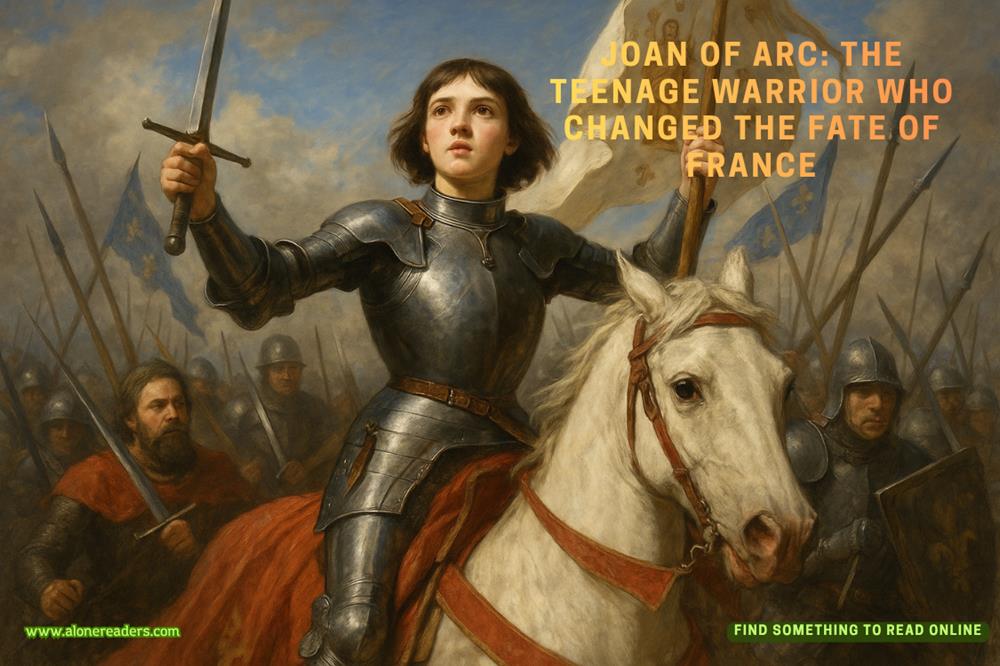“Was there a body?” I ask, carefully examining the wound site. The cut is clean, almost surgical, not the ragged tear of combat or predator attack.
“No.Just this.” Walsh watches me curiously. “Can you learn anything from it?”
“Possibly.” I open my medical kit and begin taking samples—blood, tissue, feather fragments. Each goes into a separate container, carefully labeled. “This is the first Storm Eagle biological material we’ve been able to recover intact. Their wounded typically don’t survive capture.”
“They kill themselves rather than be taken,” Walsh confirms grimly. “Fanatics.”
I don’t respond to his characterization, too focused on my examination. The wing shows signs of advanced evolution beyond normal raptor anatomy—reinforced bone structure, specialized feather arrangement for channeling electrical current, muscle attachments designed for mid-flight shifting.
“This isn’t just a severed wing,” I say after several minutes of examination. “It was deliberately cut off and left for us to find.”
Walsh frowns. “What makes you say that?”
I point to the wound edge. “This is a clean cut, made with a blade. And look at the positioning of the blood vessels—they’ve been cauterized. Someone wanted this wing preserved long enough for us to find it.”
“A message?” Walsh’s hand moves to his weapon.
“Or a warning.” I continue my examination, increasingly certain this was no random find. “Commander, I need to take this back to my lab for proper analysis.”
He hesitates, then nods. “Have your findings on my desk by tomorrow afternoon. And Dr.Ashford—this doesn’t leave the settlement. Security protocol.”
I agree, though internally I’m already cataloging the tests I need to run, the data I hope to extract from this unprecedented specimen. If I can isolate intact DNA from the tissue, it could provide insights into Storm Eagle genetics that would be impossible to obtain otherwise.
Back in my lab, I work through the night, processing samples and running analysis after analysis. The results confirm my initial theory and reveal much more. The wing contains genetic markers linked to primordial storm magic—evidence that Storm Eagles aren’t just another wild clan but descendants of ancient magical bloodlines thought extinct for centuries.
Their ability to control lightning isn’t just a physical adaptation; it’s a magical inheritance, encoded in their very DNA. This discovery could change everything we understand about shifter evolution and magical heredity.
I’m documenting my findings when a notification pops up on my screen—an incoming priority message from Haven’s Heart. Director Voss, my superior in the research division, appears on the video link. Her expression is stern.
“Dr.Ashford, I’ve received reports of unusual research activities at your frontier posting. Care to explain?”
I choose my words carefully. “I’ve been analyzing samples from Storm Eagle attack victims, as per my assignment. The data shows some unexpected genetic anomalies.”
“Anomalies that you’ve failed to include in your official reports,” she counters.
“I wanted to verify my findings before submitting preliminary conclusions,” I reply, maintaining an even tone despite my racing heart. How much does she know about the wing?
“The Council didn’t send you to conduct independent research, Doctor. They sent you to find exploitable weaknesses.” Her voice hardens. “Your next report will detail potential vulnerabilities in Storm Eagle physiology, not academic curiosities about their genetic heritage.”
“Director, with respect, understanding their genetic structure is crucial to identifying any biological vulnerabilities?—”
“You have three days to produce actionable intelligence, or you’ll be recalled to Haven’s Heart.” The threat hangs between us. “Don’t forget where your loyalties lie, Elena.”
The connection terminates, leaving me staring at a blank screen. A knot forms in my stomach. The Council doesn’t want understanding; they want weapons. And they expect me to provide them, regardless of the ethical implications.
I glance at my research—the fascinating, revolutionary discoveries about Storm Eagle biology—and wonder how much of it I dare include in my official report. How much will be twisted into means of extermination rather than avenues for potential coexistence?
The next morning, exhausted but determined, I join the settlement’s daily briefing. Captain Reed eyes me suspiciously as I take my seat, no doubt aware of my late-night activities. Commander Walsh outlines recent attack patterns and defensive strategies before turning to me.
“Dr.Ashford, share your findings on the recovered specimen.”
All eyes turn to me. I stand, tablet in hand, and present a carefully edited version of my research—enough to demonstratethe Storm Eagles’ advanced biology but omitting the more remarkable aspects of their genetic heritage that might make them targets for more aggressive action.
“Based on tissue analysis, Storm Eagles show highly evolved aerial adaptations and enhanced neural pathways consistent with coordinated tactical thinking,” I explain. “Their attack patterns suggest a hierarchical command structure rather than the typical alpha-led formations of wild clans.”
“Can they be killed?” one of the security officers interrupts bluntly.
I meet his gaze steadily. “They’re biological organisms, so yes. But their reflexes, sensory perception, and aerial maneuverability make them extremely difficult targets. Additionally, their social structure appears to include sacrificial protection of leadership figures.”















